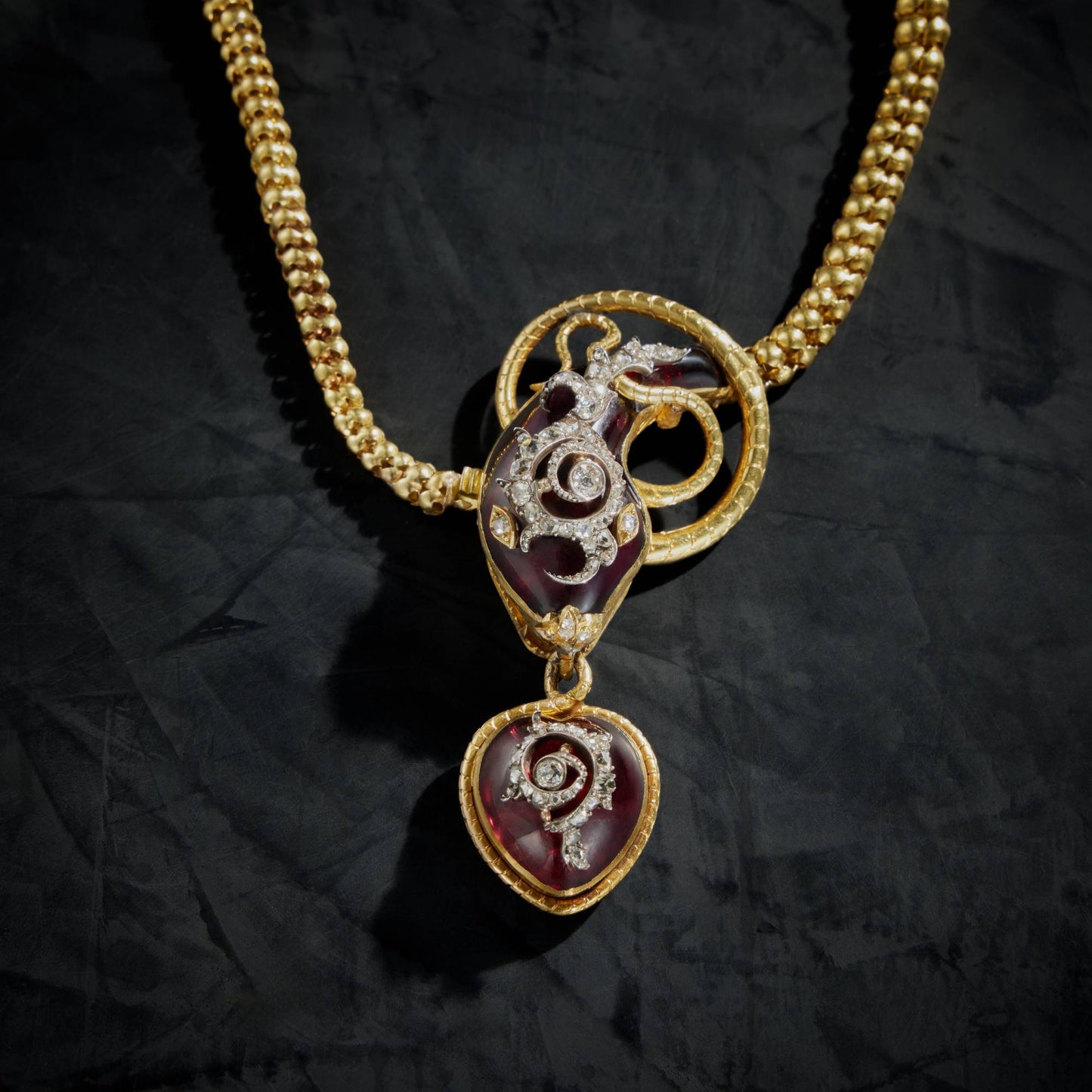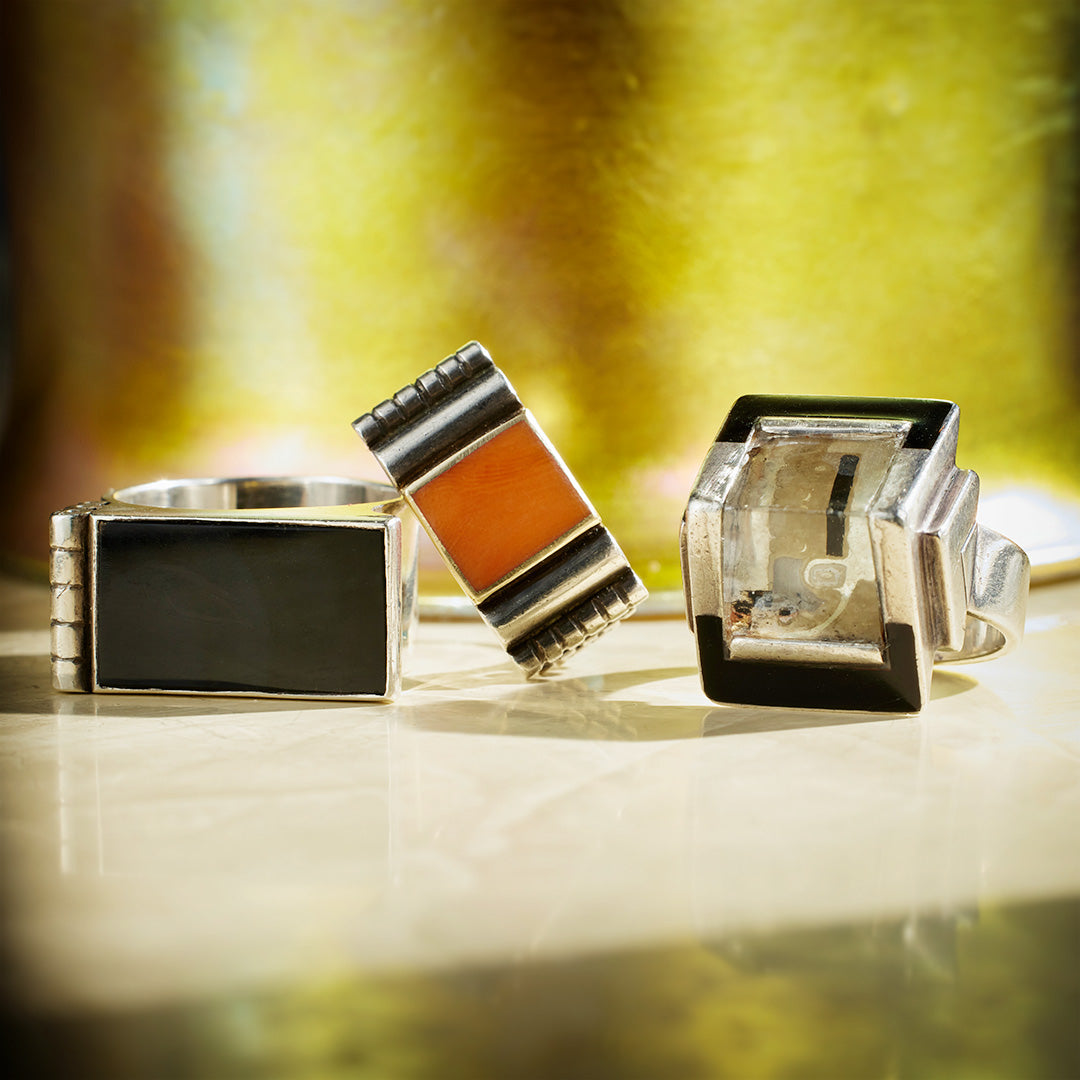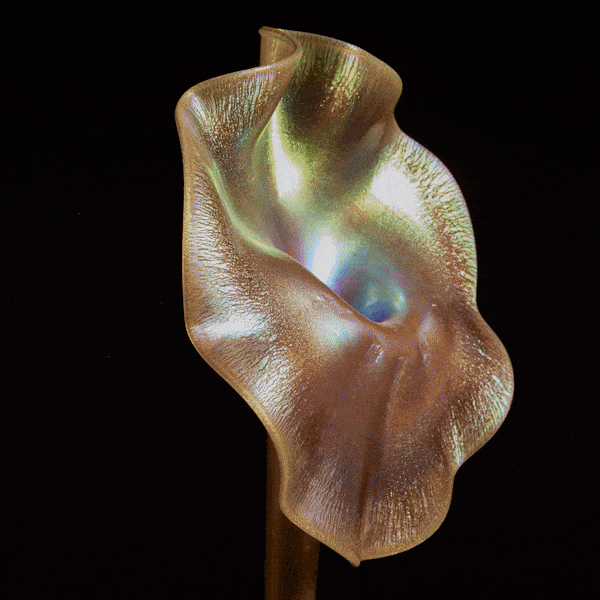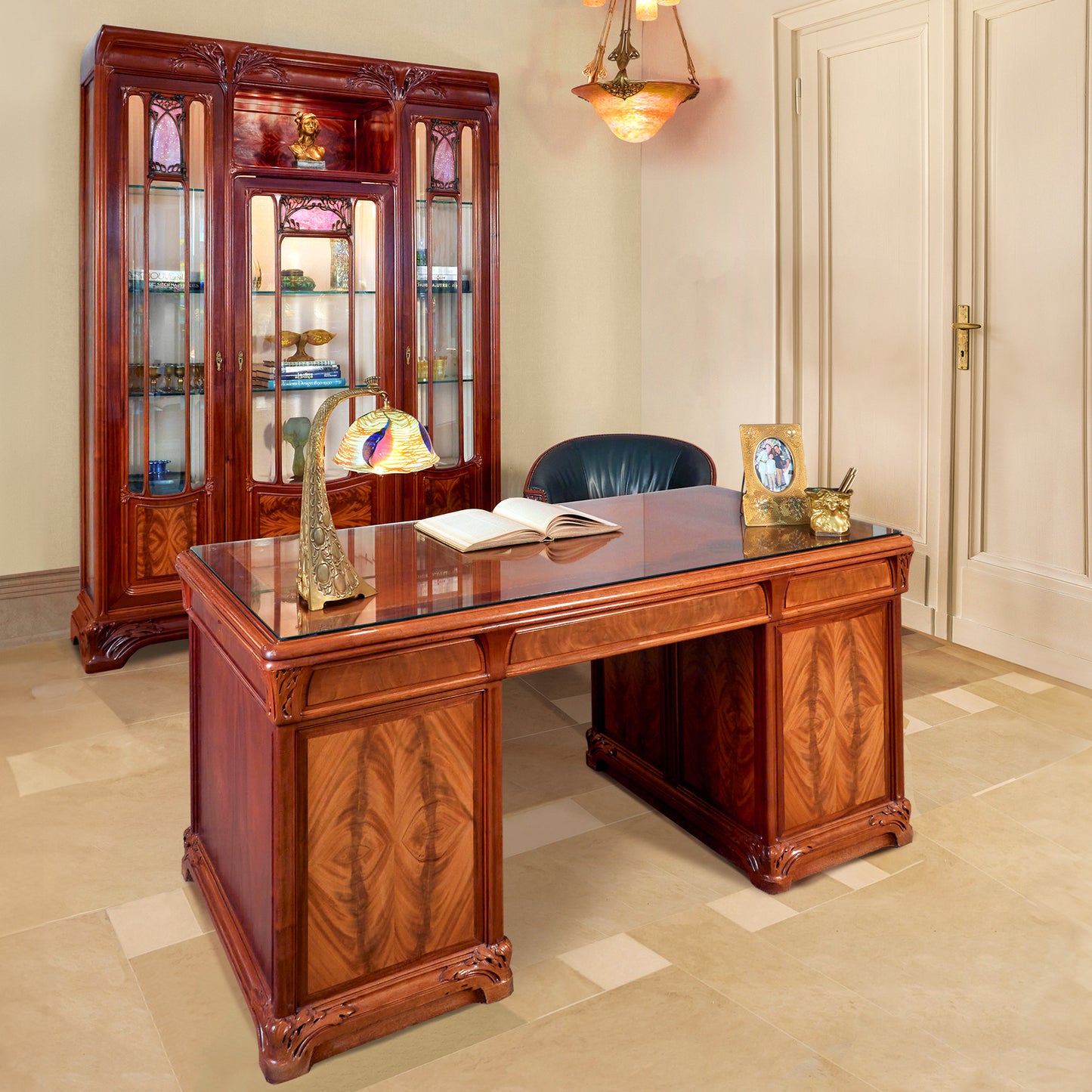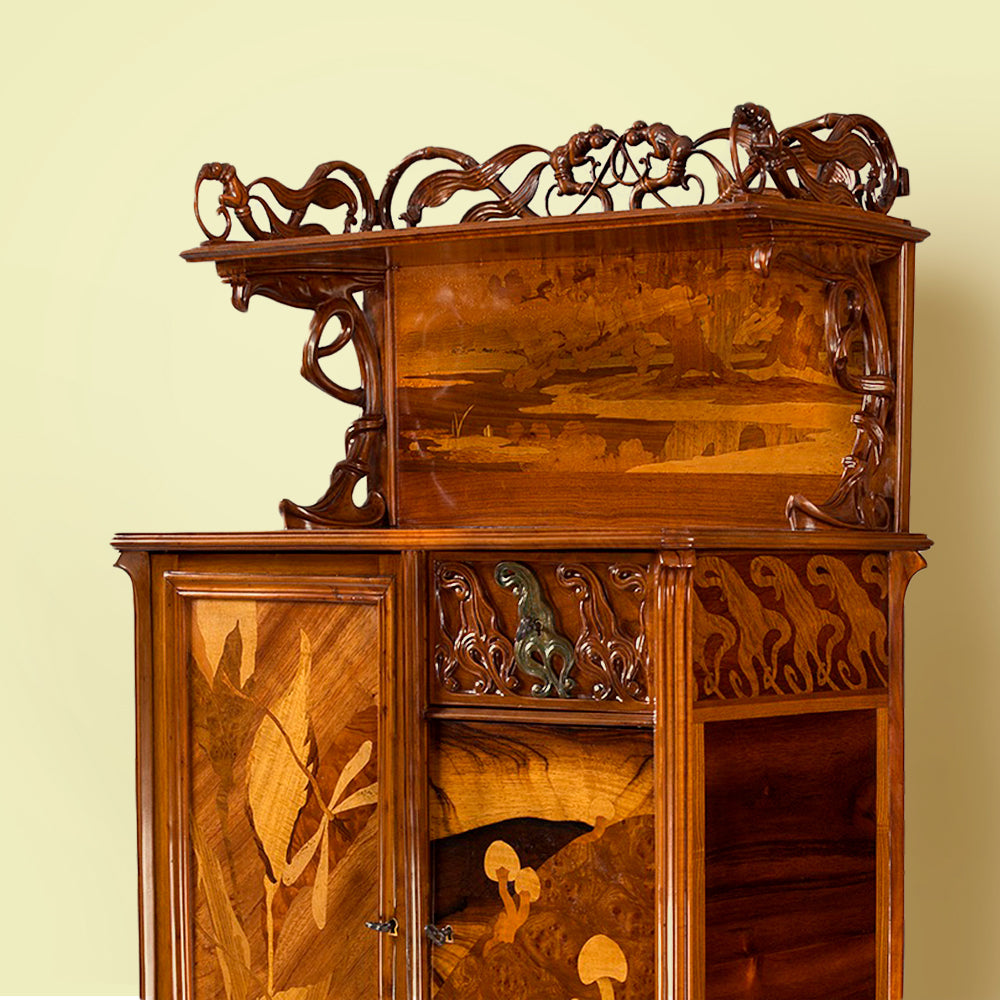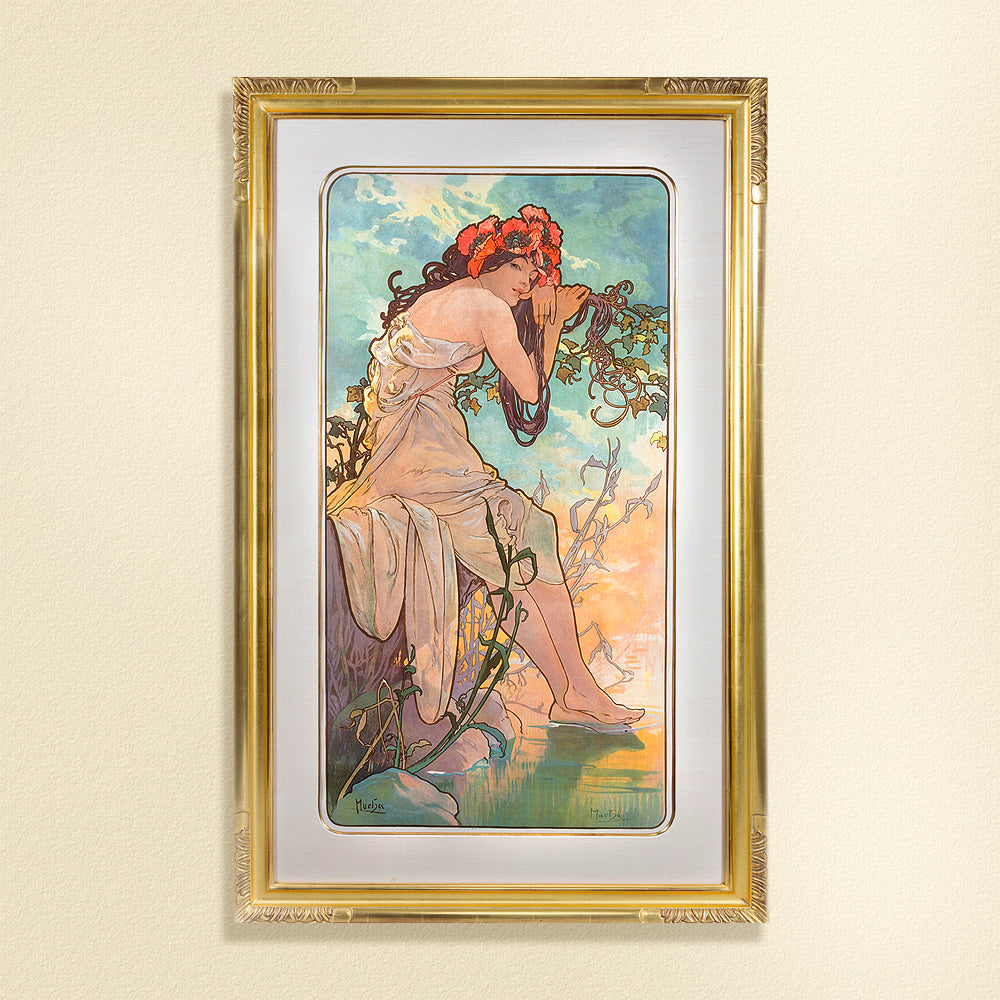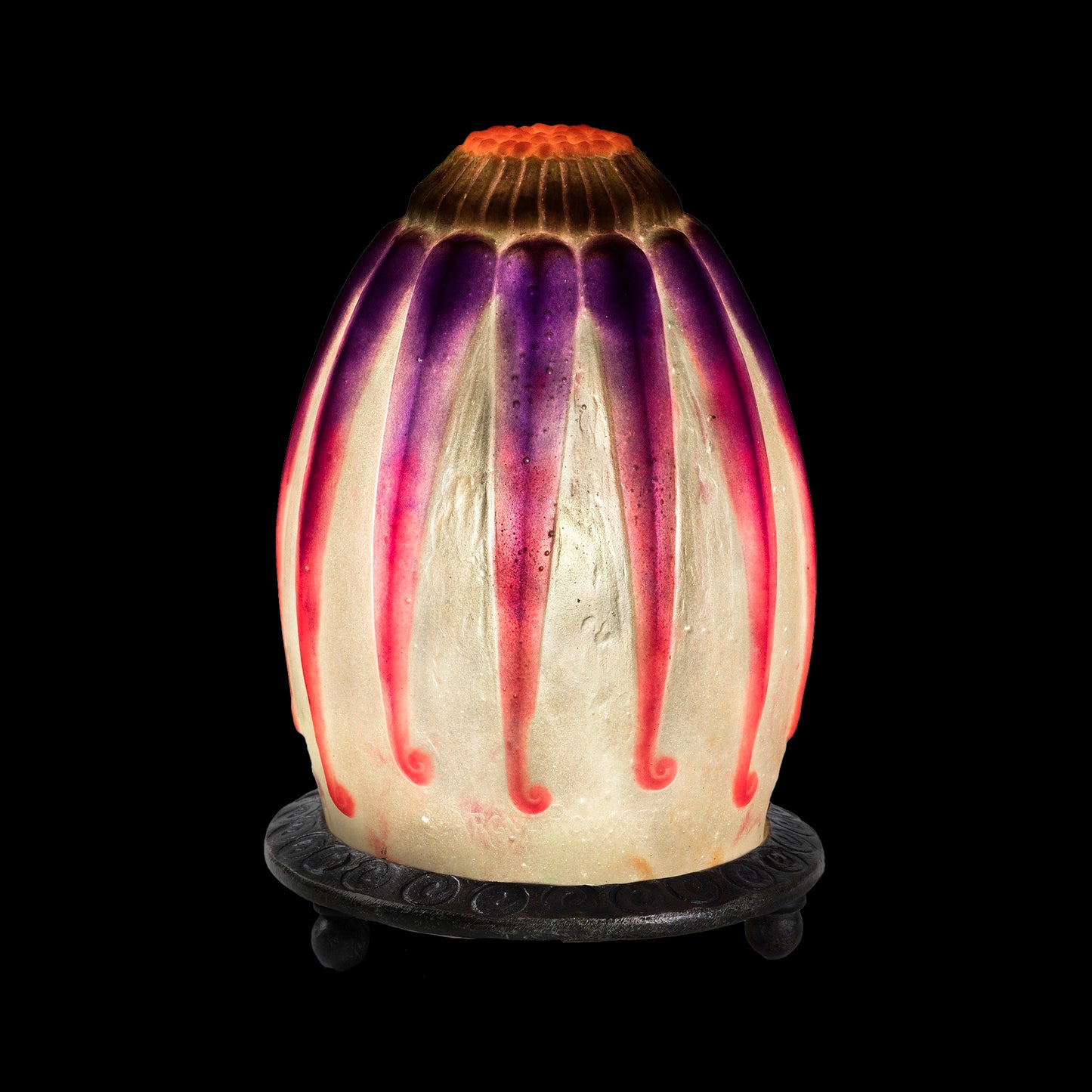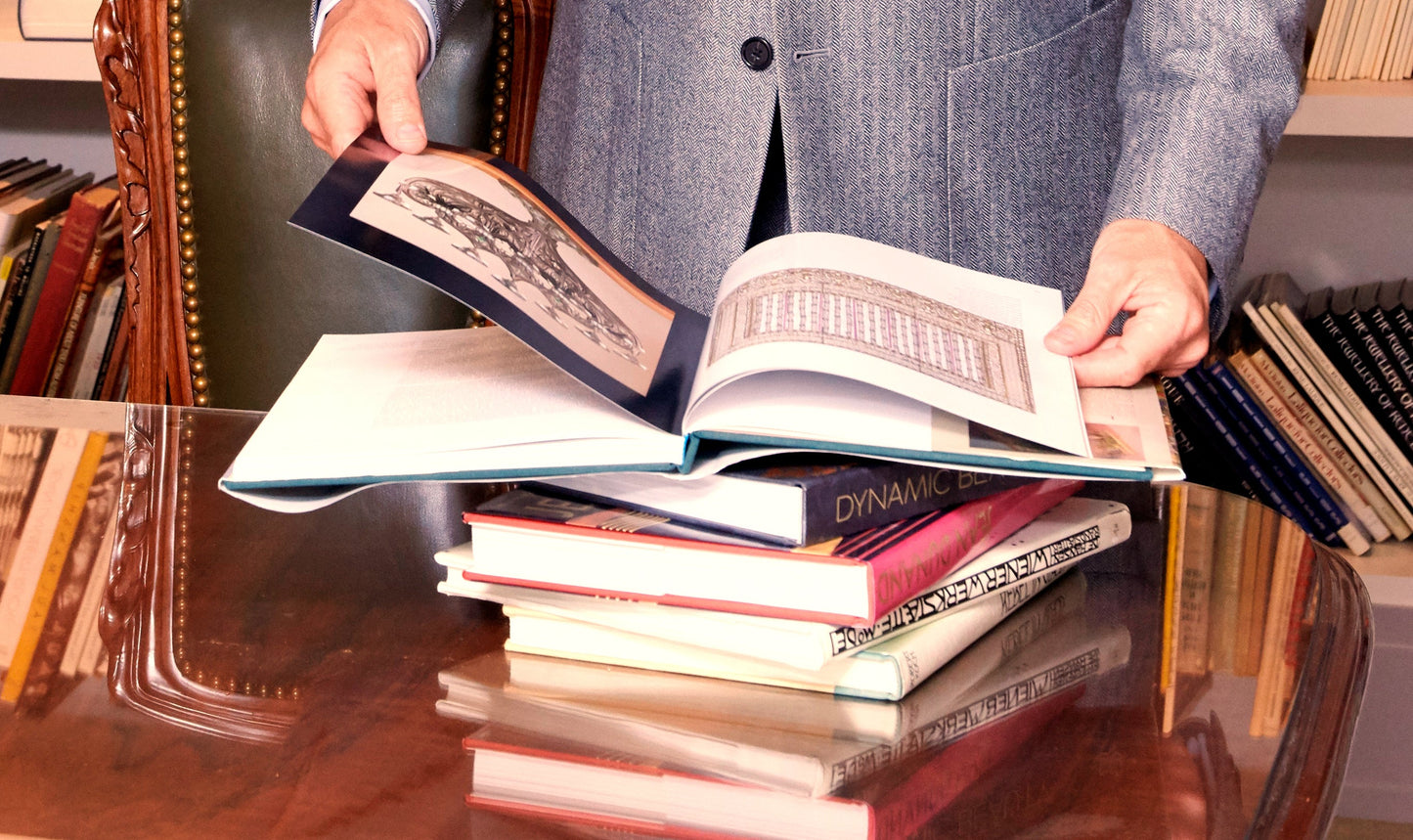
Though the term Art Nouveau—French for “new art”—suggests a singular origin, the movement was inherently international, manifesting in diverse styles across Europe. Emerging as a rejection of the historicist “pastiche” of the 19th century, Art Nouveau sought to forge something wholly original, uniting fine and decorative arts in the pursuit of the gesamtkunstwerk, or “total work of art.” From architecture to jewelry, sculpture to subway entrances, it embraced every medium without hierarchy or academic constraint. As art historian Paul Greenhalgh has observed, Art Nouveau was “a multi-faceted, complex phenomenon that defied—then and now—any attempt to reduce it to singular meanings and moments.” Known variously as the Vienna Secession in Austria, Modernisme in Spain, and Magyar Szecesszió in Hungary, the movement reflects a kaleidoscope of local identities within a shared ideal. Macklowe Gallery proudly celebrates this diversity through its exceptional collection of works, each offering a glimpse into the global vision of Art Nouveau.
Josef Hoffmann’s Wiener Werkstatte Metalwork
The Wiener Werkstätte (Viennese Workshop), founded in 1903 by Josef Hoffmann, Koloman Moser, and patron Fritz Waerndorfer, emerged as a cooperative dedicated to elevating the applied arts in Vienna. Inspired by the British Arts and Crafts Movement, the group sought to restore the value of craftsmanship in an increasingly industrialized society. Their mission was to create high-quality, visually harmonious objects that embodied the ideal of the Gesamtkunstwerk. At the Kunstgewerbeschule Wien (School of Applied Arts), Hoffmann imparted these principles to his students, often turning to Japanese folk art as a model for perceiving form in its purest state, reducing it to the essential “element of line.” In doing so, the Wiener Werkstätte helped shape a modern design language that fused international influences with a distinctly Viennese aesthetic.
Left: A tokonoma with a kakemono and ikebana flower arrangement; Middle: Josef Hoffmann Flower Basket; Right: Chinese-Style Flower Basket (Karamono hanakago) Wada Waichisai I Japanese ca. 1890–1901
Hoffmann’s engagement with Japanese design found elegant expression in his silver flower baskets, modeled on the hanakago—a traditional bamboo flower basket with a tall, arching handle used in Japanese interior decoration. These baskets, designed to rest in or hang within a tokonoma (display alcove), were intended for minimal floral arrangements, emphasizing the beauty of simplicity and negative space. Hoffmann’s adaptation of this form reflected his belief in the power of restraint and structural clarity.
In addition to natural materials, Hoffmann embraced industrial techniques. For the surface pattern of some vases, he employed Gitterwerk—a grid-like design made from perforated sheet metal. Originally an inexpensive, mass-produced material for industrial use, Gitterwerk enabled broader and more affordable production than traditional hand-hammered metal. When rendered in sterling silver, the pattern took on a refined elegance, echoing the geometric order of modern architecture. Hoffmann later developed this motif further in the gardens of the Palais Stoclet, where he reimagined it as trellises and pergolas, blending nature, architecture, and decorative art.
Top: Pergola of the Palais Stoclet; Bottom: The garden pavilion of the Palais Stoclet
This fusion of influences—Orientalism and modernism, industrial design and luxury craftsmanship—reached its height in Hoffmann’s vases and centerpieces. The vases combined the shape of a folding fan with the ridges of corrugated galvanized iron, a cheap construction material associated with British colonial territories. The tension between such humble origins and the refined tastes of Hoffmann’s elite clientele highlighted the complex interplay of utility and ornament, tradition and innovation.

Hoffmann’s fluted chalices also exemplified this synthesis. Drawing on the form of the Doric column, these vessels translated the proportional harmony of ancient Greek architecture into decorative objects. Vertical grooves along their surfaces created a rhythm of light and shadow, reinforcing both structural integrity and aesthetic appeal. With their hourglass silhouettes, these chalices married classical order with modern elegance, embodying the core ideals of the Vienna Secession: unity of style, purity of form, and a deep reverence for both historical precedent and contemporary expression.
Left: Josef Hoffmann Chalice, Macklowe Gallery; Middle: Doric Order, No. 10 Architecture of the Temple of Minerva Polias and Neptune the King James Bruce, 1730–1794,
Josef Hoffmann Covered Vase
One striking example of Hoffmann’s synthesis of global influences is his covered silver vase—a remarkable fusion of Egyptian, Chinese, and medieval European design traditions. Its form was inspired by a Baroque German jasper vase from the Waddesdon Bequest, a collection of nearly 300 objets d’art donated to the British Museum by Baron Ferdinand Rothschild in 1898. The original, installed in 1900 to great acclaim, featured exquisite stone carving and jeweled British mounts. Hoffmann’s reinterpretation retains the formal grandeur of its model while infusing it with cosmopolitan references and modernist refinement.
Left: Josef Hoffmann Covered Silver Vase, Macklowe Gallery; Right: Jasper Low Vase, Waddesdon Bequest, 17th century, British Museum
The vase’s lid, topped with a cabochon malachite finial, evokes the silhouette of Qing dynasty liangmao—conical summer hats worn by Chinese officials and adorned with jewels to denote rank. Hoffmann, along with Klimt and Emilie Flöge, frequently drew inspiration from Qing textiles and accessories, incorporating their motifs into furniture, fashion, and tableware. In this context, Hoffmann’s vase becomes more than a utilitarian object; it is a cultural artifact that elevates the domestic through global ornament and design.
Left: Mandarin hat with Chinoiserie Taffeta cape, Pochoir, George Barbier, 20 October 1913, Chester Beatty Museum; Middle: Josef Hoffmann Sugar Bowl, 1906, Macklowe Gallery; Right: Liangmao, Qing Official Summer Hat, Inner Mongolian History Gallery, Inner Mongolia Museum, Hohhot, China
The base of the vase features a pierced ring foot with a frieze of cartouches and stylized lotus blossoms, a direct reference to ancient Egyptian wall paintings. The lotus motif, first used in Egypt and later adopted by the Assyrians, Greeks, and Romans, recurs throughout Hoffmann’s oeuvre—from his stage sets for The Magic Flute to the Egyptian-inspired interiors of the Palais Stoclet. Here, Hoffmann merges these historic references with the purity of modern form, crafting an object that bridges ancient civilizations and the ideals of Secessionism.Assyrian and Greek versions of the lotus, lily, and palmette, Drawings by Frances Besner Newman
In this covered silver vase, Hoffmann distills centuries of artistic tradition into a singular modern object, demonstrating the Vienna Secession’s broader ambition to reconcile history with innovation. By weaving together Egyptian symbolism, Chinese imperial forms, and medieval European craftsmanship, he transforms a decorative vessel into a statement of cultural fluency and formal experimentation. The vase encapsulates Hoffmann’s belief that modern design could be enriched, not constrained by the past, and that even the most ordinary household object could become a site of aesthetic and intellectual engagement. In doing so, he affirms the Secessionist ideal that art should not only reflect its time, but elevate it.
Zsolnay and the Hungarian Secessionists
Left: Zsolnay Bird and Tulip Ewer, Macklowe Gallery; Middle: Ceramic askos, 1900–1700 BCE, from Tiszafüred-Majoroshalom Cemetery, Hungary; Hungarian National Museum, Budapest. Right: Ceramic askos, 1150–800 BCE, from Budapest–Királyok útja Cemetery, Hungary; Budapest History Museum, Budapest.
This resplendent Zsolnay bird ewer—resting on three feet and crowned with a blooming tulip handle—is a triumph of Art Nouveau design, created by Sándor Apáti-Abt for the Zsolnay manufactory. This ewer, along with 19 other tulip-themed pieces unique, were exhibited at the Exposition Internationale de Ceramique in St. Petersburg. Its form draws inspiration from Bronze Age Hungarian askoi, zoomorphic vessels historically used in shamanistic rituals. Excavated from cemeteries across Hungary in the 19th century, these ancient artifacts captivated local artists and scholars alike. Some surviving askoi, now housed in Budapest museums, depict human–bird hybrids and were found to contain traces of blood or psychoactive substances. It is believed that shamans consumed these liquids during ceremonies to undergo spiritual transformation, temporarily assuming the identity of birds, aided by avian spirit guides. By the Late Bronze Age, askoi often took the shape of waterfowl—creatures able to traverse land, water, and air—reflecting their symbolic resonance with multiple cosmological realms.
This concept of metamorphosis strongly resonated with Art Nouveau’s fascination with the natural world and the fantastical, where hybrid forms—fusing flora and fauna—embodied mythological and spiritual transcendence. At the same time, Zsolnay was incorporating ideas from contemporary esoteric movements such as Theosophy, Anthroposophy, and Zoroastrianism. These belief systems merged ancient religious traditions with modern philosophies, encouraging a return to the spiritual imagination of the past.
The ewer dazzles with a kaleidoscope of hues owed to a metallic luster glazing technique called "eosin", its surface alive with the fluid poetry of botanical curves. The technique, invented by Vilmos Zsolnay became his best-known invention and distinguished the factory from those of any other ceramics workshop. At the same time, eosin glazes were most suited to the romantic and symbolic style of floral Art Nouveau; the materials and techniques acted as a source of esoteric and spiritual experience, an embodiment of light and its qualities of perpetual change.
Left: Zsolnay Roof of the Museum of Applied Arts, 1893, Right: Church of the Savior on Blood, 1883-1907
The jewel-toned colors of the ewer were especially well-suited to its exhibition in St. Petersburg. The recently completed Church of the Savior on Spilled Blood (1883–1907), with its onion domes clad in jeweler’s enamel, embodied a vibrant aesthetic that would go on to inspire the iridescent Zsolnay eosin ceramic tiles seen on buildings throughout Budapest.
Left: Zsolnay "Japanese Cosmos" Glazed Ceramic Vase; Right: Cosmos Garden cosmos or Mexican aster, Cosmos bipinnatus, and hototogisu or toad lily, Tricyrtis hirta, Kono Bairei, Kusabana Hyakushu, 1901-1904
This evocative Japonist four handled vase by Sándor Apáti Abt for Zsolnay features a radiant background of gold, green, and orange, and is adorned with Japanese cosmos flowers, known as “秋桜” (akizakura). Introduced to Japan in the 19th century, these delicate blooms quickly became emblematic of autumn, celebrated in vast seasonal fields. The vase’s form is inspired by the columbine flower, whose distinctive nectar spurs curl gracefully from the petals, echoing the vessel’s elegant curves.
Left: Zsolnay "Poppy Seed Capsule" Glazed Ceramic Vase; Right: Pavot Plate, Etude de la plante : son application aux industries d'art M. P Verneuil, 1903, Getty Museum
Shaped like a poppy seed capsule, this Zsolnay vase is encircled by a frieze of poppy seed capsule bouquets. In the Art Nouveau tradition, the poppy—particularly its seed capsule—held layered symbolic meaning, representing both natural beauty and the mysterious, dreamlike qualities of the unconscious. Associated with sleep, regeneration, and even transcendence due to the plant’s opiate properties, the poppy served as a fitting motif for the movement’s fascination with nature’s sensual and mystical aspects. This vase also features a martele pattern—designed to mimic the texture of hand-hammered metal—that evokes the shimmering reflections of the sea.
Together, these visionary works by Sándor Apáti-Abt for Zsolnay exemplify the seamless integration of form, symbol, and spirit that defined Art Nouveau. Whether drawing from Bronze Age ritual vessels or botanical forms imbued with mythic resonance, each piece channels a sense of transformation—of matter into metaphor, craft into mysticism. The shimmering eosin glazes, with their mutable colors, became a material metaphor for spiritual change, echoing the era’s embrace of esoteric traditions and natural forces. Exhibited alongside the jewel-toned splendor of St. Petersburg’s architecture, and inspired by global motifs from Japonism to Hungarian prehistory, Zsolnay’s ceramics transcend decorative function. They serve instead as luminous vessels of cultural memory and imaginative rebirth, capturing the very soul of the fin-de-siècle quest for the sublime.
